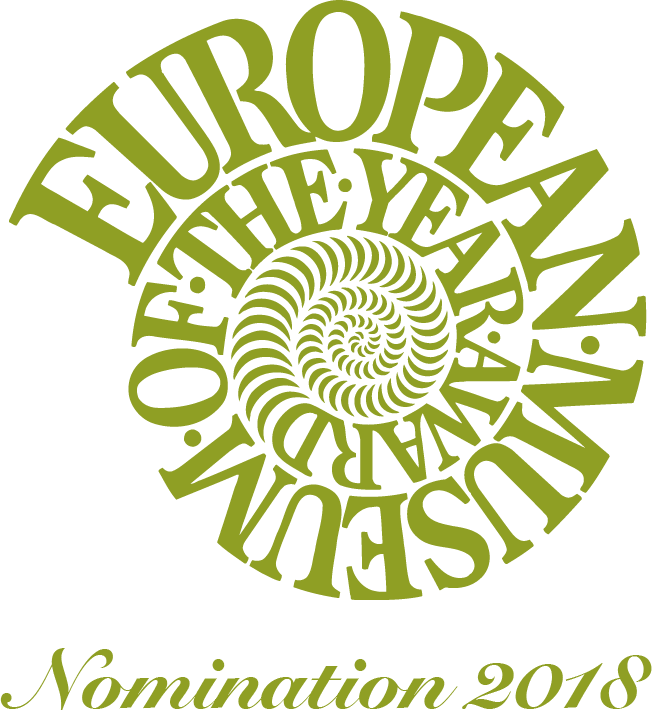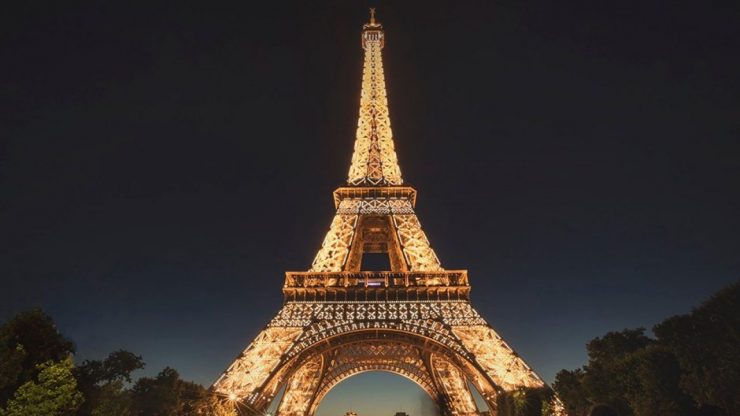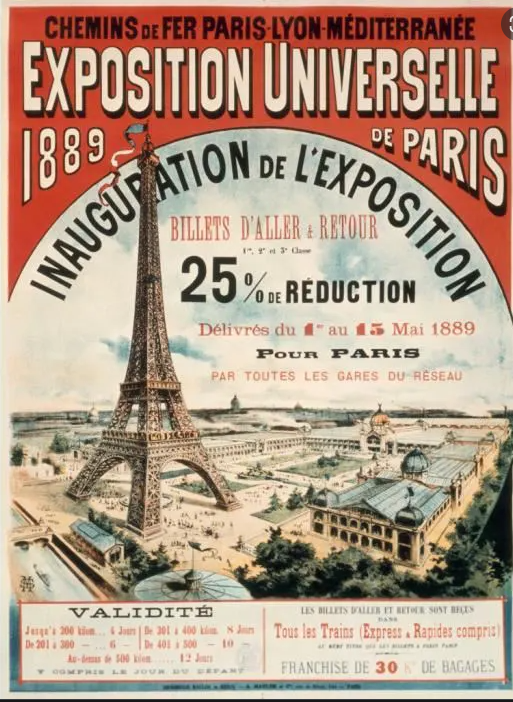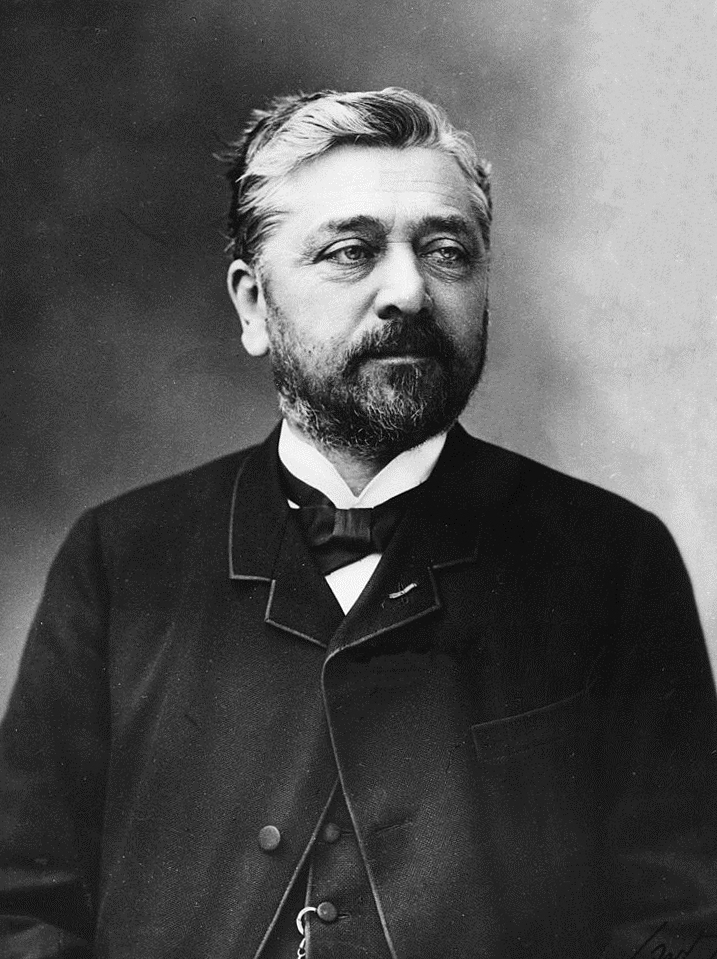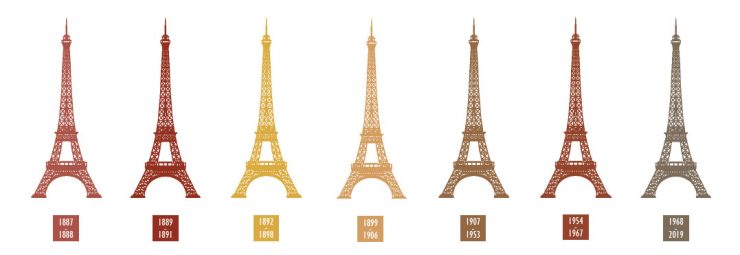Who doesn’t know the Eiffel Tower? This symbol, which represents Paris and by extension France, is today one of the most visited monuments in the world. With its breathtaking views over the entire capital, this monument impresses and intrigues.
But what is its history?
It is impossible to talk about the Eiffel Tower without starting with the Universal Exhibitions. These events, which appeared in the 19th century, were intended to present to the whole world products that were mainly produced by industry. They were first national and then international. It was not until 1850 that they became Universal. Representing a real stake in the economic, industrial, political, social and cultural history of all the participating countries, they were characterised by their splendour and their heterogeneous aspect, which left a lasting impression on the collective imagination.
In keeping with the Industrial Revolution, the products that emerged from the World Fairs were designed to meet a collective need. For example, inventions such as the telephone or the bra were to be found there. New means of transport, such as the metro or the steamboat, which inspired the famous bateaux-mouches, also made their appearance.
It is in this context of modernity that our famous Eiffel Tower appears.
The project for its construction was born during the preparation of the Universal Exhibition of 1889. For this event, a competition was held to build the highest tower in the world on the Champ de Mars. Of the 107 projects, Gustave Eiffel’s design was chosen.
The first version of the Eiffel Tower bears no resemblance to the one we know today, as the building was originally much more complex. It was initially planned to include monumental arches, large glass rooms and numerous ornaments on the monument. However, for technical and aesthetic reasons, its inventor finally opted for simplicity of form.
In the twilight of the 20th century, the Eiffel Tower represented a real challenge. Like a giant jigsaw puzzle, it was assembled directly on the Champ de Mars and, being no less than 312 metres high, it was designed to withstand powerful winds. Its curves are precisely calculated, as are the 18,000 pieces that make it up, and it will be openwork rather than solid like a traditional building.
Like the Paris metro, the Eiffel Tower project will be at the heart of the debate. While the most avant-garde saw its construction in a positive light, many were against it. Maupassant said: “This high and thin pyramid of iron ladders, an ungainly and giant skeleton, whose base seems made to carry a formidable monument of Cyclops, and which aborts in a ridiculous and thin profile of factory chimney”.
The junction of all the legs will be made on December 7, 1887 and will be officially opened on May 15, 1889, for the Universal Exhibition in Paris. It remained the tallest tower in the world until 1930, when the Chrysler Building in New York was built. Its lifts, available from 26 May 1889, represented a technological revolution.
Did you know that…?
- According to some sources, the first visitors to the Iron Lady were the English royal family and the mythical figure of the American West, Buffalo Bill.
- The Eiffel Tower was originally designed for the city of Barcelona for the 1888 World Fair. However, the Catalan authorities refused the monument. A year later, for the Paris World Fair, its construction was proposed again and this time accepted.
- The Eiffel Tower has had many colours! Between yellow, red, orange, ochre and brown, it is only since 1968 that the tower has had the brown tone that we know today. In 2022, the tower is scheduled to return to yellow for the 2024 Paris Olympic Games.
- Speaking of colours, did you know that it takes an average of 70 tonnes of paint to repaint the entire tower? This operation takes place about every seven years.
- On 4 February 1912, Franz Reichelt, a Frenchman of Austrian origin, jumped from the first platform of the Eiffel Tower, which is 57 metres high, to test a parachute of his own invention. He died at the foot of the monument because his invention did not open properly.
- Every day, the Jules Verne restaurant on the second floor of the Eiffel Tower witnesses an average of two marriage proposals.

